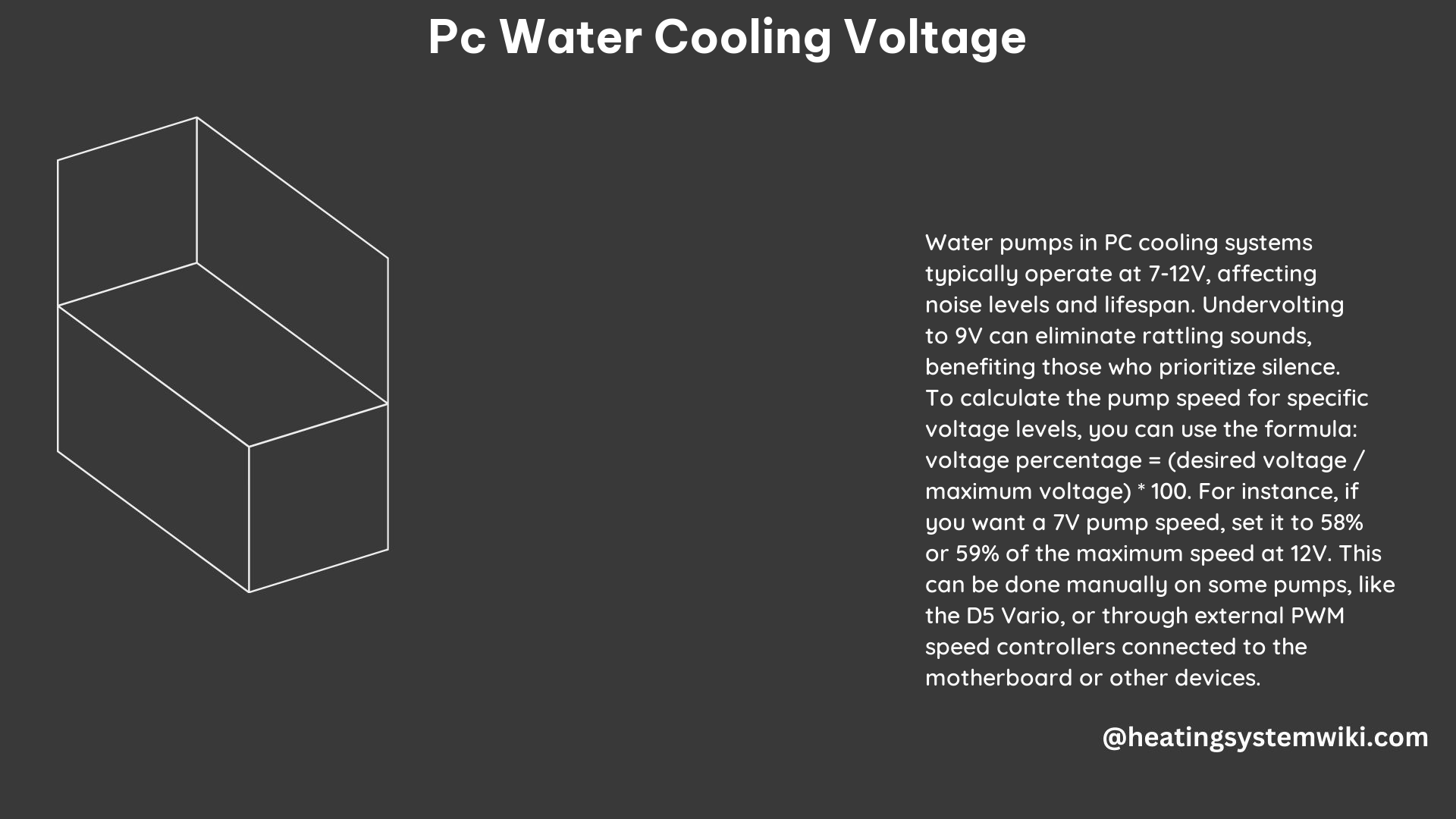PC water cooling voltage is a crucial aspect of building and maintaining a high-performance liquid-cooled system. The voltage supplied to the pump, water blocks, and other components significantly impacts the system’s performance, noise levels, and longevity. This article will delve into the specifics of PC water cooling voltage, focusing on technical specifications, calculations, and DIY considerations.
Technical Specifications of PC Water Cooling Voltage
When dealing with PC water cooling voltage, it is essential to understand the technical specifications of the components involved. These specifications include:
Voltage Regulators
Voltage regulators (VRs) require cooling to prevent damage and prolong the life of the motherboard. In an open case like the Thermaltake P90, where radiator fans may not directly cool the motherboard, it is still necessary to cool the VRs. A dedicated fan mounted on the motherboard can provide adequate cooling. The recommended voltage for VRs is typically between 1.05V to 1.2V, with a maximum temperature of 105°C.
Pumps
Pumps have a stall voltage, the minimum voltage required for the motor to turn. Voltage-controlled pumps rely on external voltage adjustment, while PWM-controlled pumps have two connectors for power and PWM control signal. The most common pump voltages are 12V and 24V, with flow rates ranging from 60 l/h to 1200 l/h. The power consumption of pumps can vary from 3W to 30W, depending on the model and flow rate.
Flow Rate
Flow rate measures how fast a pump moves liquid, typically measured in liters per hour (l/h). For an average water cooling loop, a minimum flow rate of 120 l/h is recommended. Actual flow rates will always be lower than the pump’s maximum rating due to loop restrictions, such as the number of components, the length of the tubing, and the size of the radiator.
Power Connection
The most common power connectors for PC water cooling pumps are the 4-pin (Molex) connector and SATA power. Adapters are available if a specific pump has the wrong power connector for your system. The Molex connector provides up to 54W of power, while the SATA power connector can deliver up to 54.6W.
Calculating PC Water Cooling Voltage

Calculating the correct voltage for your water cooling components is crucial for optimal performance and noise levels. For instance, if you want to run your AiO Alphacool Eisbaer pump at 7V, you will need to calculate the percentage speed by yourself. Since 7V is 58.33% of 12V, you should set the pump speed to 58% or 59% to achieve the desired performance and noise level.
To calculate the voltage for your water cooling components, you can use the following formula:
Desired Voltage = (Desired Percentage / 100) x Maximum Voltage
For example, if you want to run your pump at 80% of its maximum speed and the maximum voltage is 12V, the desired voltage would be:
Desired Voltage = (80 / 100) x 12V = 9.6V
DIY Considerations for PC Water Cooling Voltage
When building a custom water-cooled PC, several DIY considerations should be taken into account regarding voltage:
Component Selection
Choosing components with the correct voltage requirements is essential. For example, when cooling a CPU with an AIO kit by XSPC, ensure that the voltage regulators are adequately cooled to prevent damage to the motherboard. Incompatible components can lead to system instability, component failure, and even fire hazards.
Voltage Adjustment
Adjusting the voltage supplied to the pump and other components can significantly impact the system’s performance and noise levels. For instance, lowering the pump voltage can result in quieter operation but may reduce cooling efficiency. It is recommended to start with the manufacturer’s recommended voltage and adjust accordingly to find the optimal balance between performance and noise.
Power Connectors
Ensuring that the pump has the correct power connector for your system is crucial. If the pump has the wrong power connector, adapters are available to safely connect the pump to your system. Using the wrong power connector can lead to system instability, component damage, and even fire hazards.
In conclusion, understanding PC water cooling voltage and its technical specifications is vital for building and maintaining a high-performance liquid-cooled system. By considering factors such as flow rate, pump type, voltage regulation, and power connections, you can ensure optimal performance, noise levels, and longevity for your water-cooled PC.
References:
– How to Set the Pump Voltage Correctly
– How to Build a Water-Cooled PC
– Water Cooling Components: Pumps
– Water Cooling and Voltage Regulators
